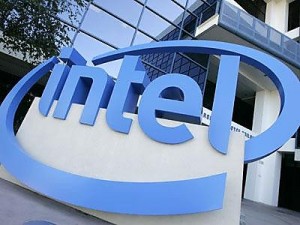 Intel will take a stake in semiconductor tools company ASML and invest in its research and development efforts, to advance manufacturing technologies that will help Intel produce smaller and more power-efficient chips, the chip maker announcedyesterday.
Intel will take a stake in semiconductor tools company ASML and invest in its research and development efforts, to advance manufacturing technologies that will help Intel produce smaller and more power-efficient chips, the chip maker announcedyesterday.
ASML, based in The Netherlands, is one of the world’s largest providers of tools used for chip manufacturing. It has partnerships with Intel and other leading chip makers including Samsung, GlobalFoundries and TSMC (Taiwan Semiconductor Manufacturing Co.).
Intel will initially invest approximately €1.7 billion ($2.1 billion) for a roughly 10 percent stake in ASML, and later invest an incremental €838 million for an additional 5 percent stake. The latter investment will be dependent on a shareholder vote.
Intel will also invest €829 million in ASML’s research and development efforts. The investment will be made primarily to advance the use of 450-millimeter wafer and extreme ultra-violet (EUV) lithography, which will help semiconductor companies make chips at a lower cost while scaling down chip sizes.
Intel currently makes chips using a 22-nanometer process, and adding EUV lithography will help it produce chips at smaller geometries. It’s scheduled to move to a 14-nanometer process next year, for example, and existing tools are expected to be sufficient for those chips.
Semiconductor chips are made by slicing thin silicon discs, or wafers, from long cylinders of silicon, then “printing” circuits on the wafers and cutting them up into chips. Intel currently uses 300-millimeter silicon wafers, and the larger, 450-mm wafers will allow it to produce more chips from each wafer, with less waste.
An Intel spokesman said the move to EUV and 450-mm wafers will help reduce chip production costs by up to 40 percent.
Intel hasn’t said when it will move to 450-mm wafers and EUV, but it has already invested billions to help it manufacture smaller, faster chips. In October 2010 it said it would invest $6 billion to $8 billion in its chip manufacturing operations, and the following February it said it would spend $5 billion to build a chip plant in Chandler, Arizona, which is expected to be completed by next year.
Intel and its rivals have been plotting a transition to 450-mm wafers for many years, and they’ve been pushing tool makers like ASML to provide the equipment. But the tool makers have had problems providing those tools, which was part of the reason chip makers have delayed the move to 450-mm.
Throwing a few more billion dollars at the problem should allow ASML to accelerate the development of EUV tools, said Nathan Brookwood, principal analyst at Insight 64.
The current tools use ultraviolet light at a 93-nm wavelength to transfer circuit patterns onto silicon wafers using masks. “With each new technology generation, using that big wavelength to make teenier and teenier transistors gets harder and harder,” Brookwood said.
EUV has a wavelength in the 10-nm range, Brookwood said.
“So you’re going from using this big wavelength to decreasing it by a factor of eight. You have a much finer point to create these images on the wafer,” Brookwood said.
Intel’s investment in ASML’s R&D is a smart move as it will result in cost savings over time by helping it move to 450-mm wafers, Brookwood said.





